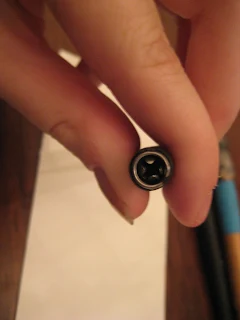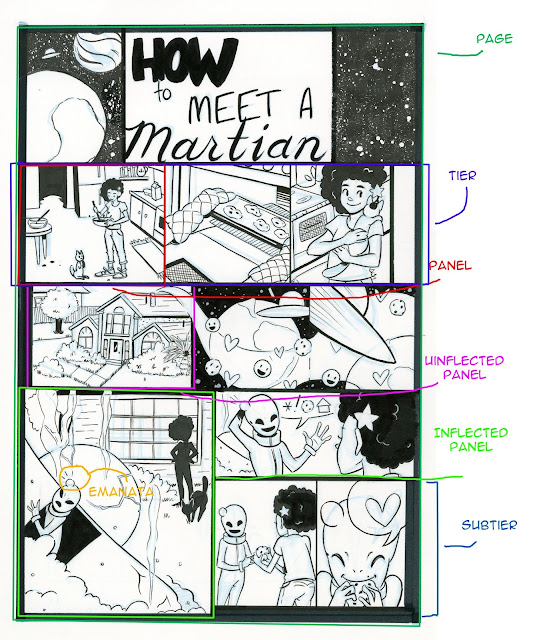 |
| This post has been brought to you by Heidi Black's entries to the welovefine
Marvel Villain competition. She won't say it outright, but I will, you
should be casting your 5 votes for her Kid Loki and Mystique designs.
You can start here |
The Inking Hierarchy
Although I'm taking Advanced Inking Techniques, the hierarchy with in my inking supplies still embarrasses me. I've got a heavy hand, and have used tech pens for years, so when it comes to my own comics, I still reach for my Copic Multiliners and my fude pens, mostly because they are speedy and Copic marker safe. When it comes to inking assignments for inking class, I reach for nibs first- I can't pull the kind of detail I want from a brush just yet, even though I've sized down to a 1 (much better for me than a 2). Brush is a glorious mystery that I practice with constantly, but I can't fall back on it in a pinch.
From the response on Twitter when I post nib renders, I get the impression that a lot of other artists may be a bit intimidated by nibs. To be honest, my relationship with them isn't all that great- my heavy hand seems to break a nib in about three days of constant use. I've heard rumors of nibs reaching a sweet spot with repeated use, but I can't get mine to last that long. Though my list of favorite nibs is short and sweet, I'm going to go through the majority of nibs that currently reside in my two inking boxes, separated for ease of use by function, General Inking and Lettering.
Finding a Voice in my Inks
For those of you interested in more traditional forms of inking (i.e. non digital and not using a tech pen)- nibs tend to give a lighter, less expressive line than a brush. For those of you with manga-inspired styles, utilizing nibs may be a good choice, particularly if you have a shoujo manga influence that you'd like to keep intact. In the past I have pencilled my eyelashes and individual strands that get merged into one weird eyelash lump when inked, but I've found that the right nib allows me to preserve the feathery quality of eyelashes quite well. Knowing when to use nib and when to use brush takes a lot of practice and work, and you should probably absorb and analyze as much traditional inking inspiration as possible before starting, so you have a goal to work from. I'm in a weird place right now because I really love heavy, slick linework that's prevalent in American shonen inspired comics (like Super Pro K.O.) because I find it to be really dynamic, but my drawing style is more influenced by lighter, delicate inkwork. I also really enjoy the heavily textural inkwork of American indie comic artists (particularly Craig Thompson), but I find it doesn't yet jive with what I tend to do. Inking is all about finding a balance, and for me, that's been a bit of a struggle, particularly when working in my own 'style'.
So now on to the pen porn!
Inking Supplies in their Natural Habitats:
General Inking
 |
| General Inking supplies, sorted by nib types- Packaged, loose spoon, loose closed back, loose 'chip'. The only designations that make any sense to other inkers would be 'packaged' and 'spoon'. By closed back, I simply mean nibs that have a full circle of metal in the back (it limits me to the type of holder I can use) and by 'chip' I mean smaller nibs that are not closed in the back. |
|
Lettering
 |
| Lettering and ruling nibs. Sorted by A, B, C, and 'round'. These are nibs that have a fixed lineweight, which makes them great for lettering or borders on pages. Confession: I letter with Microns and rule out borders with Multiliners. I am a terrible comic artist. |
Today's Focus Will be on General Inking
I firmly believe that for nibwork to be tolerable, you need to find a holder that works well for you. I have a variety of holders, but only two really hold my loyalty- a Tachikawa nib holder and a Koh-i-noor nib holder.
Nib Holders
 |
| Top to bottom- A well used Tachikawa nib holder, with cover on, Koh-i-noor nib holder with cork grip, standard comes-with-the-nibs Speedball plastic nib holder, Speedball oblique nib holder. I hear this is great for lefties, but being right handed, I've never tried it. Can any lefties chime in? |
 |
| Difference in how nibs are held in a standard nib holder, and an oblique nib holder. Note: both these holders can only hold the larger nibs. |
 |
| There's a circle cut in the plastic that you jam the nib into. |
 |
| Crowquill nib holder (with non-removable quill) and another basic holder. |
 |
| The slightly better nib holders have this little metal bit that looks like the gaping maw of a Dune worm. |
 |
| You kinda just jam the nib into it, and it really only works with one size of nib. |
 |
| My Koh-i-noor holder has the same sort of Dune worm maw, but the cork grip makes it easier to work with. I tend to use this holder with spoon and G type nibs, and mainly when applying corrections in white ink. |
 |
| Unfortunately, my Tachikawa is a bit too beaten up for you to see it, but it has two concentric circles- a large one that works well with G and spoon type nibs, and a smaller one that will hold many quills. Sadly, quills come in a variety of sizes, and no one holder will suit them all. |
In general, I rely on the Tachikawa nib holder a lot. I've never seen them in stores, I ordered mine (this is m second) from Jetpens a year or so ago.
Major Nib Types:
 |
| A very quick and dirty nib style chart. |
 |
| The shapes next to the letter designation indicate the sort of stroke they make. A has a square tip, B a round, C is a calligraphic rectangle. |
 |
| Believe it or not, I've never really used the Round or the Steel Brush. Guess I'll have to do so in the near future. |
 |
| My Manga tank is both upside down and extremely dirty, because it sees a lot of use, and is hard to clean. |
Focus on Crow Quill
Focus on Spoon Types
 |
| For spoon nib users, there's actually a lot of variation between the types, including size and finish. |
Minor Demonstration
 |
| And here's a little bit of a nib demo. Unfortunately, my test paper (cardstock) bleeds and feathers, but this doesn't usually happen on the Semismooth Bristol I usually ink on. This bleeding and feathering occurs when the nib cuts the paper and the ink soaks into the fibers. Unfortunately for me, I tend to get a lot of dripping, especially if the ink is too watery. |


Comments
Post a Comment